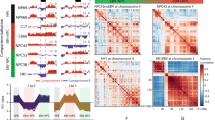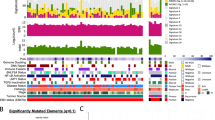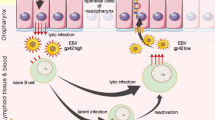Abstract
Nasopharyngeal carcinoma is a subset of head and neck squamous cell cancers with unique endemic distribution and aetiological co-factors. Epstein-Barr virus has been revealed to be an important aetiological factor for most nasopharyngeal carcinomas. Nevertheless, additional genetic alterations may be involved in their development and progression. The aim of this study was to determine the likely chromosomal locations of tumour-suppressor genes related to Epstein-Barr virus-associated nasopharyngeal carcinoma. Fifty-six microsatellite polymorphic markers located on every autosomal arm were used to estimate the incidence of loss of heterozygosity in 27 Epstein-Barr virus-associated nasopharyngeal carcinomas. High frequencies of allelic loss were observed on chromosome 3p (75.0%) and 9p (87.0%). Chromosome 9q, 11q, 13q and 14q displayed loss in over 50%, while chromosome 3q, 6p, 16q, 19q and 22q exhibited loss in 35-50%. Furthermore, several other chromosomal arms demonstrated allelic loss in 20-35%. Additionally, 1 of the 27 cases showed microsatellite instability at multiple loci. These findings provide evidence of multiple genetic alterations during cancer development and clues for further studies of tumour-suppressor genes in Epstein-Barr virus-associated nasopharyngeal carcinoma.
This is a preview of subscription content, access via your institution
Access options
Subscribe to this journal
Receive 24 print issues and online access
$259.00 per year
only $10.79 per issue
Buy this article
- Purchase on SpringerLink
- Instant access to full article PDF
Prices may be subject to local taxes which are calculated during checkout
Similar content being viewed by others
Author information
Authors and Affiliations
Rights and permissions
About this article
Cite this article
Mutirangura, A., Tanunyutthawongese, C., Pornthanakasem, W. et al. Genomic alterations in nasopharyngeal carcinoma: loss of heterozygosity and Epstein-Barr virus infection. Br J Cancer 76, 770–776 (1997). https://doi.org/10.1038/bjc.1997.460
Issue date:
DOI: https://doi.org/10.1038/bjc.1997.460
This article is cited by
-
Multiple roles of CD90 in cancer
Tumor Biology (2016)
-
The Simultaneous Determination of Tricarboxylic Acid Cycle Acids and 2-Hydroxyglutarate in Serum from Patients with Nasopharyngeal Carcinoma Via GC–MS
Chromatographia (2016)
-
Anti-angiogenic and tumor-suppressive roles of candidate tumor-suppressor gene, Fibulin-2, in nasopharyngeal carcinoma
Oncogene (2012)
-
EBV-LMP1-targeted DNAzyme restrains nasopharyngeal carcinoma growth in a mouse C666-1 xenograft model
Medical Oncology (2011)
-
Identification and functional analysis of NOL7 nuclear and nucleolar localization signals
BMC Cell Biology (2010)



